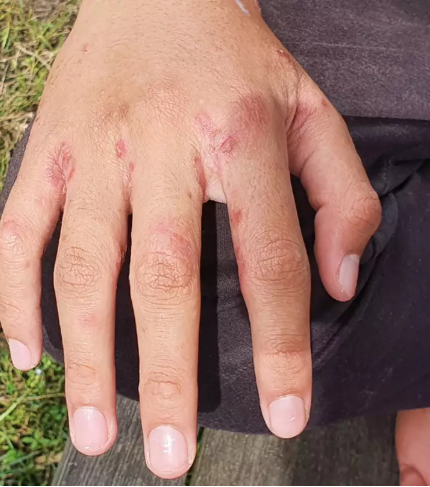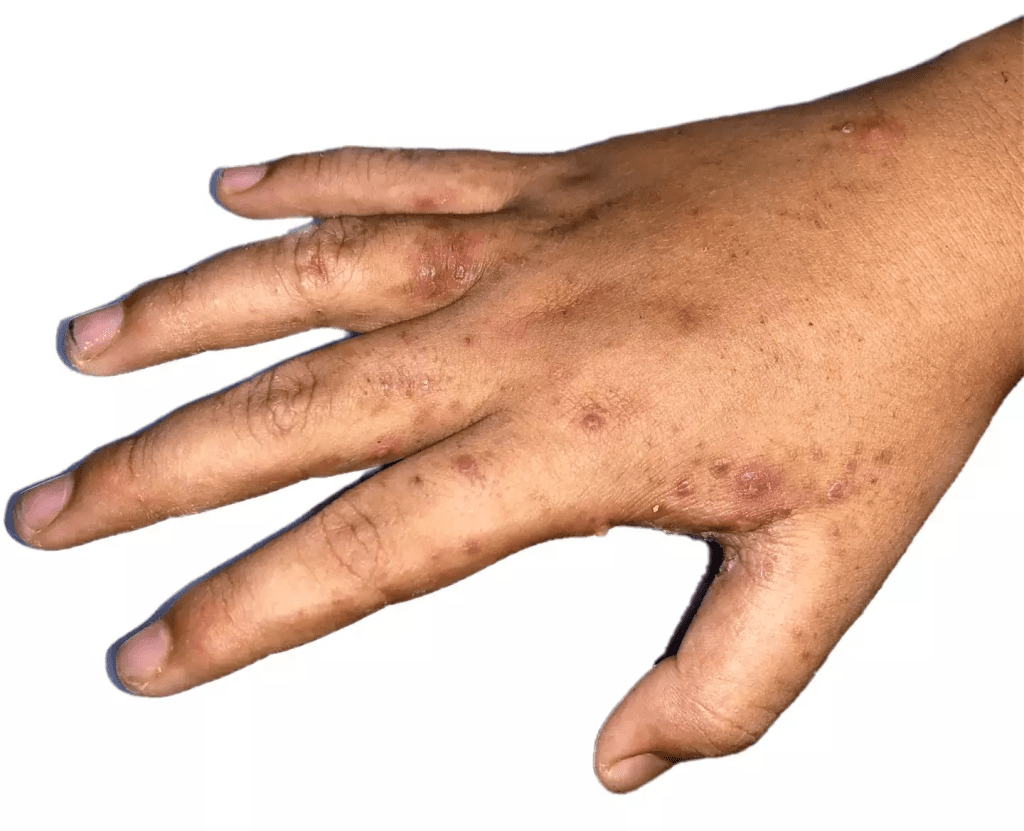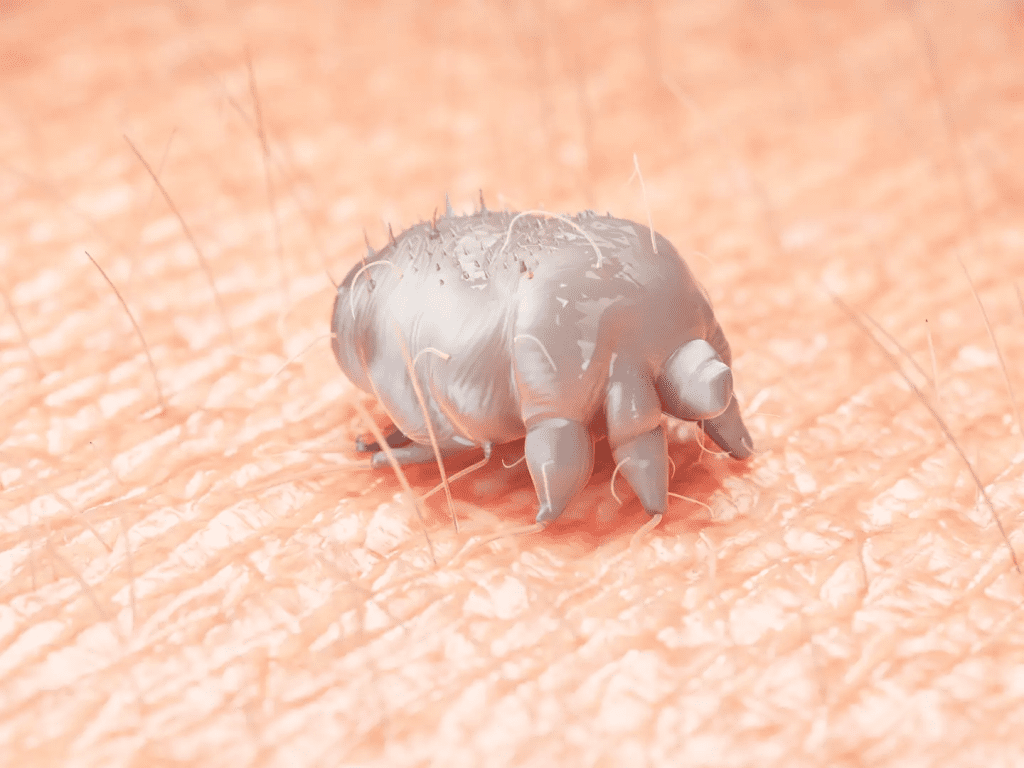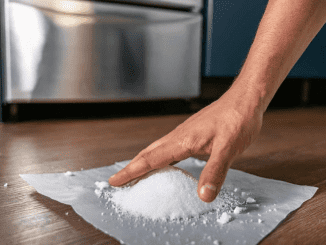As the UK faces a surge in scabies cases, health experts are urging the public not to ignore any unusual tiny red dots on the skin. These seemingly harmless spots could be an early sign of a highly contagious skin infection. While scabies is treatable, leaving it unchecked can worsen the condition, increase the risk of complications, and spread to others. In this article, we’ll explore what scabies is, who’s at risk, and how to identify and manage it effectively.

What Are Scabies? Understanding the Skin Infection
Scabies is a contagious skin disease caused by Sarcoptes scabiei, a tiny mite that burrows beneath the skin. These mites lay eggs under the skin’s surface, leading to a rash and intense itching. This infection spreads rapidly, especially in crowded or close-contact environments.
How to Recognize Scabies Symptoms
Scabies typically manifests as:
- A raised, red rash that may appear as small bumps or tiny red dots.
- Intense itching, especially at night, which often worsens as the mites move or lay eggs.
- Small burrow tracks, usually appearing as thin, irregular lines on the skin.
These symptoms usually show up on warmer areas of the body, such as the wrists, elbows, fingers, armpits, and waistline. However, scabies can spread across the entire body if not treated promptly.
Who Is Most Likely to Get Scabies? High-Risk Groups
According to medical experts, while anyone can contract scabies, certain groups are at a higher risk due to their living conditions, age, and immune status.
1. People in Crowded Living Conditions
Scabies spreads quickly in environments where people live in close quarters. This includes:
- Prisons
- Homeless shelters
- Dormitories
- Refugee camps
Living in such spaces increases the likelihood of direct skin-to-skin contact, facilitating the transmission of scabies.
2. Infants, Children, and Young Adults
Infants, children, and young adults are at higher risk because they frequently interact in close quarters, such as in:
- Schools
- Daycare centers
- Playgrounds
Parents, teachers, and caregivers are also at increased risk of contracting scabies from close contact with infected children.
3. The Elderly in Nursing Homes
The elderly, particularly those living in nursing homes, are highly susceptible to scabies outbreaks. Nursing home staff and healthcare workers are also vulnerable, as they come into regular contact with infected individuals.
4. People with Multiple Sexual Partners
Scabies can be transmitted through sexual contact. Those with multiple sexual partners are at greater risk due to the intimate nature of the transmission, which involves prolonged skin contact.
5. Individuals Sharing Bedding or Clothing
Sharing bedding, towels, or clothes with an infected person is a common way to contract scabies. Mites can survive for up to 3-4 days on fabrics, making shared items a potential risk.
6. People with Weak Immune Systems
Individuals with compromised immune systems face a greater risk of contracting scabies. In severe cases, they may develop crusted scabies, a rare form characterized by thick, crusted lesions. This form is highly contagious, requiring immediate medical attention.

Why Scabies Cases Are Spiking in the UK: A Closer Look
The UK is currently experiencing a noticeable spike in scabies cases, particularly in the northern regions. Professor Kamila Hawthorne, chairwoman of the Royal College of General Practitioners, notes that diagnoses are “above the five-year average and rising.” Here are some possible reasons for this increase:
1. Post-Pandemic Social Interaction
With the easing of COVID-19 restrictions, more people are now engaging in close physical contact, increasing the transmission risk of scabies. Crowded gatherings, public events, and the reopening of schools have contributed to the rise in cases.
2. Lack of Awareness and Social Stigma
Many people still perceive scabies as a condition linked to poor hygiene, which creates a stigma. This misconception can discourage individuals from seeking prompt treatment, allowing the infection to spread further.
3. Delayed Medical Visits
Due to the pressures on the NHS, some people are hesitant to visit healthcare facilities for minor symptoms like red dots or rashes. However, untreated scabies can worsen over time and lead to secondary skin infections, making early detection crucial.
How to Prevent Scabies: Essential Tips for Protection
Preventing scabies requires proactive measures, especially for those in high-risk groups. Here’s how you can protect yourself and others from contracting the infection:
1. Maintain Good Hygiene
While scabies is not caused by poor hygiene, maintaining clean living conditions can reduce the risk of spread. Wash bedding, towels, and clothes regularly, especially if someone in the household is infected.
2. Avoid Close Physical Contact with Infected Individuals
Minimize skin-to-skin contact with individuals showing symptoms of scabies. This includes avoiding intimate contact until the infection has been treated effectively.
3. Don’t Share Personal Items
Avoid sharing clothing, towels, or bedding with others, especially in communal living spaces. If you suspect exposure to scabies, immediately wash the affected items in hot water and dry them on a high heat setting.
4. Early Detection and Treatment
If you notice the tiny red dots associated with scabies, seek medical advice promptly. Early treatment with prescribed creams or oral medications can prevent the spread of the infection and reduce complications.

Managing Scabies: What to Do If You Get Infected
If you suspect you have scabies, consult a healthcare provider for diagnosis and treatment. The infection is typically treated with prescription creams or lotions that kill the mites and eggs. Here’s how to manage scabies effectively:
1. Apply Medication Properly
Apply the prescribed medication thoroughly over your entire body, from neck to toes, even in unaffected areas. Follow the instructions carefully to ensure full coverage and effectiveness.
2. Treat Household Members Simultaneously
Scabies can spread to anyone in close contact with the infected person. It’s important that all household members undergo treatment at the same time, even if they don’t show symptoms, to prevent reinfection.
3. Clean and Disinfect Your Living Space
After treatment, wash all clothing, bedding, and towels in hot water and dry them on high heat. Vacuum furniture, carpets, and mattresses to eliminate any lingering mites.
Conclusion: Don’t Ignore the Tiny Red Dots on Your Skin
The recent spike in scabies cases across the UK serves as a reminder to pay attention to tiny red dots and other signs of skin infections. While scabies may not be a serious health threat, it can be incredibly uncomfortable and highly contagious. By recognizing symptoms early, understanding who’s most at risk, and taking proactive measures, you can help stop the spread and protect yourself and those around you. Stay vigilant and prioritize your health—sometimes, those tiny red dots are more than meets the eye.


